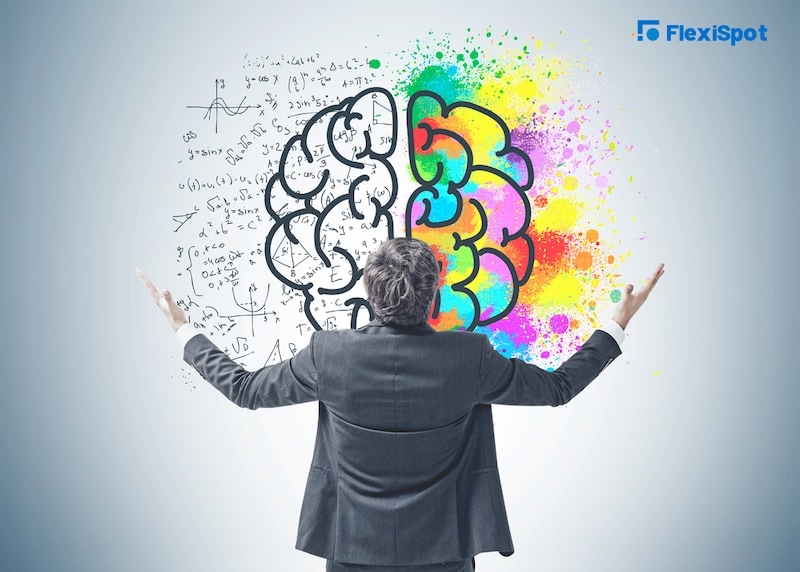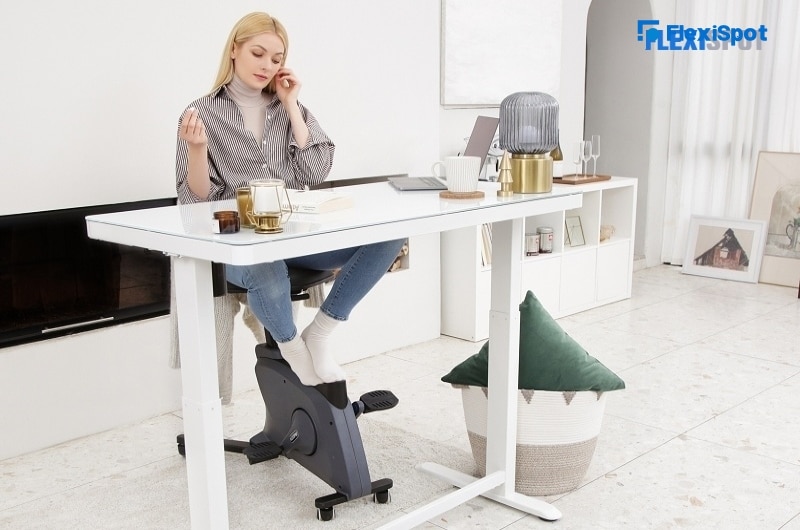Whether you’ve moved to a new workspace or are just renovating your old one, picking the right colors can make a huge difference.
Colors in your interior design don’t have to be limited to things like the walls or the flooring, either. Simple additions to your workspace like the curtains, furniture, and even the accessories you keep on the furniture – all of these contribute towards the overall feeling of your room.
Many interior designers use color psychology to find the right way to decorate any space. Color psychology takes into account how different colors can affect your feelings and influence your behavior. You might think, well, how many colors are there, anyway? But different colors can have different shades and tints, and even these affect your thinking!
What is Color Psychology?
Color has the power to affect your emotions, your thoughts, bring your stress levels up or down – even as far as to influence how your food tastes in the moment!
That’s why, when you’re decorating your workspace, you want to take into account the colors you use. After all, you don’t want to end up using colors that bring your productivity down.
Picking the right colors for your space also depends greatly on how you want to feel when you’re inside. Since we’re talking about workspaces, ideally, you’d want to feel energized and focused while you’re in it. Picking colors that may make you feel too relaxed may not be the best idea.
Of course, we all have our own personal experiences with colors which can influence the effects they can have on us. However, plenty of colors have some common attributes that can affect the mood, and many designers tend to use these in interiors.
Picking the Right Colors For Your Interior
Before you go about selecting which colors you want to use for your space, you want to first look at your workspace itself to see how exactly you want to decorate it. Naturally, you won’t be using only one color – there will be a palette, and it should be a complementary one.
You want to take into consideration the size – darker colors tend to make small spaces look smaller, so if the room you work in is a small one, maybe a lighter color is a good idea. This will depend on your preferences, of course.
The lighting you use, the way you want to arrange your furniture, the time of the day you’ll be spending most of the time in the room – all of these are important considerations to make before you decide on what kind of colors you want to use to decorate your workspace.
How Colors Affect Your Mood
To understand what colors to pick for your workspace, you’d need to know how certain colors affect your moods. Before that, we’d have to look at how you can split colors into categories.
There are three main categories: cool, neutral, and warm. The ‘temperature’ of colors depends greatly on factors like hue, saturation, and brightness. For the most part, though, warm colors tend to ‘step forward’ while cool colors recede into the background.
Warm colors are generally energetic and express excitement. Warm colors can be vibrant and tend to make you feel energized, but overusing them can result in the space becoming overwhelming. They are very good as accent colors, however, and are great for spaces where you want to encourage excitement, social interaction, and a lot of activity.
On the other hand, cool colors are usually relaxing and serene. They make the space better suited for focused solo activities like work or reading but can also get a bit depressing if you use them too much.
Neutrals are, as the name suggests, the middle ground. These are neither cool, nor warm, and you can use them with cool or warm colors to emphasize those colors. For example, a bright yellow painting (a warm color) on a white wall will make the overall appearance of the wall bright, even if it’s just the painting that’s bringing the color. On the other hand, if the painting was a dull blue (a cool color) the wall could look dull as well, despite having no real color.
Again, the temperature of the colors depends on things like hue or saturation. Different shades of what is technically the same color can have different effects. For example, neon blue will still seem to pop out, but a deep maroon will tend to fade into the background, even though blue is a cool color and maroon is a shade of red – which is warm.
That said, most colors will tend to be warm, cool, or neutral in all their shades and tints. Let’s take a look at how most colors will affect your mood, so you can decide how you want your workspace to be decorated.
Warm Colors
Red
Red is strongly associated with passion and intense feelings, whether they be positive or negative. That’s why it’s associated with anger or danger while also being associated with love. Red stands out among other colors very easily, which makes it a good accent color. It can get overwhelming because of its intensity, though.
If you’re decorating your workspace, you’d want to keep little reds in your room because it can get difficult to focus with such a bright color around you.
Yellow
Yellow is another common color. It is cheerful and optimistic and gives off energy. Yellow can be a good addition to your workspace since it makes you feel positive and productive. But highly saturated yellows can get irritating so you should make sure you pick a suitable shade of it.
Cool Colors
Blue
Blue is a universally popular color because of its calming nature. Because of the general association with clear skies or open seas, blue is considered to be relaxing and creative. For this reason, it can be a great color for your workspace and make your environment much more suited for productivity. However, darker shades of blue can make the room too dark and if there is not enough sunlight, it can get a bit chilly which can do the opposite and hinder productivity.
Green
Most commonly associated with nature, green signifies growth and freshness. It is also considered to be relaxing to the eyes, so it is a good option for your workspace decoration. Since it is easy to look at and has positive associations, green can be a great contributor towards workspace productivity.
Neutrals
White
White is one of the most common neutral colors and usually signifies purity and clarity. Because of how much light white reflects, it makes the space look bigger and can be an excellent base color to use accents with. Without accents, white can look a bit cold and uninviting.
For workspaces, where too many colors can get distracting, white is an excellent option for furniture. You can use colors in accessories and other kinds of décor to add color to the space, but if you’re set on focusing, white is the best option for your base.
Black
Another commonly used neutral color, black is all about luxury and elegance. In fact, when paired with lighter colors, it can create a very strong contrast and becomes a great focal point. This is why you find so much furniture with a mix of black and other colors.
Like white, it is also a good option for your workspace furniture, since it doesn’t get too distracting and can look elegant and sophisticated.
Many furniture items combine these two neutral colors for balance. Flexispot’s Adjustable Standing Desk, for example, comes in black, white, or both. Perfect for workplace ergonomics, the adjustable standing desk allows you the benefit of working while sitting and standing with only the push of a button.
The frame is also made of strong and stable material and provides excellent quality for your workspace. It also comes with an LED display with which to adjust the desk’s position – and even set reminders!
There are also other options for the tabletop. You can pick between bamboo, laminated tops, or solid wood. The material is durable and elastic and the carbonized technology coating makes it moisture, insect, and scratch-resistant.
It also has a cable tray that can keep your workspace decluttered, as well as your wires safe.
The world of color is a vast one. Not only are there many more colors than the ones we’ve talked about out there, but different combinations can have different effects.
When decorating your workspace, it is a good idea to keep your work goals in mind. Ideally, you want your workspace to be one in which you are comfortable and relaxed, but also feeling productive and energetic enough to get some work done.
With the right colors and a good understanding of basic color psychology, you can pick out the right colors for your workspace and make it a much more productive place to work in!





